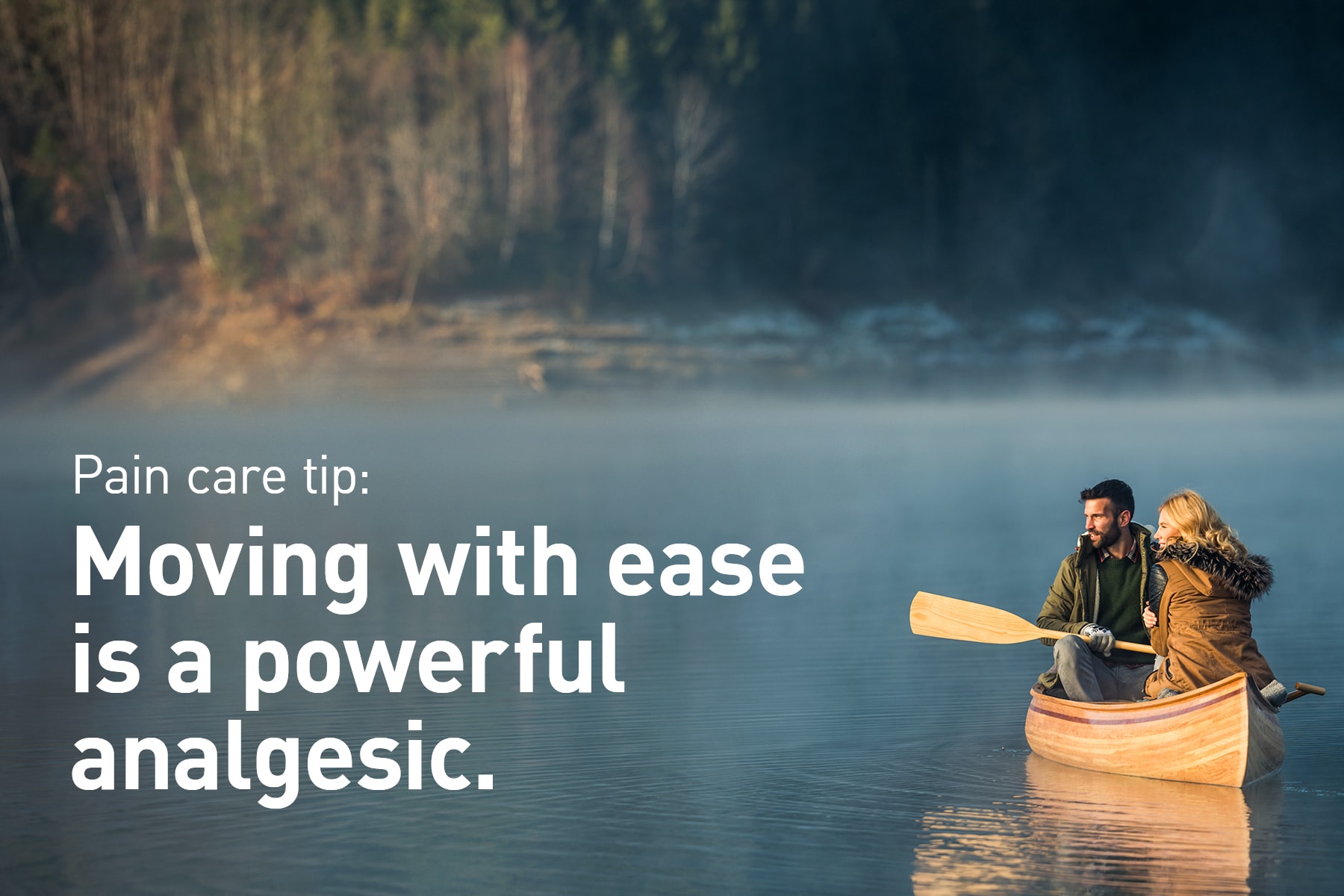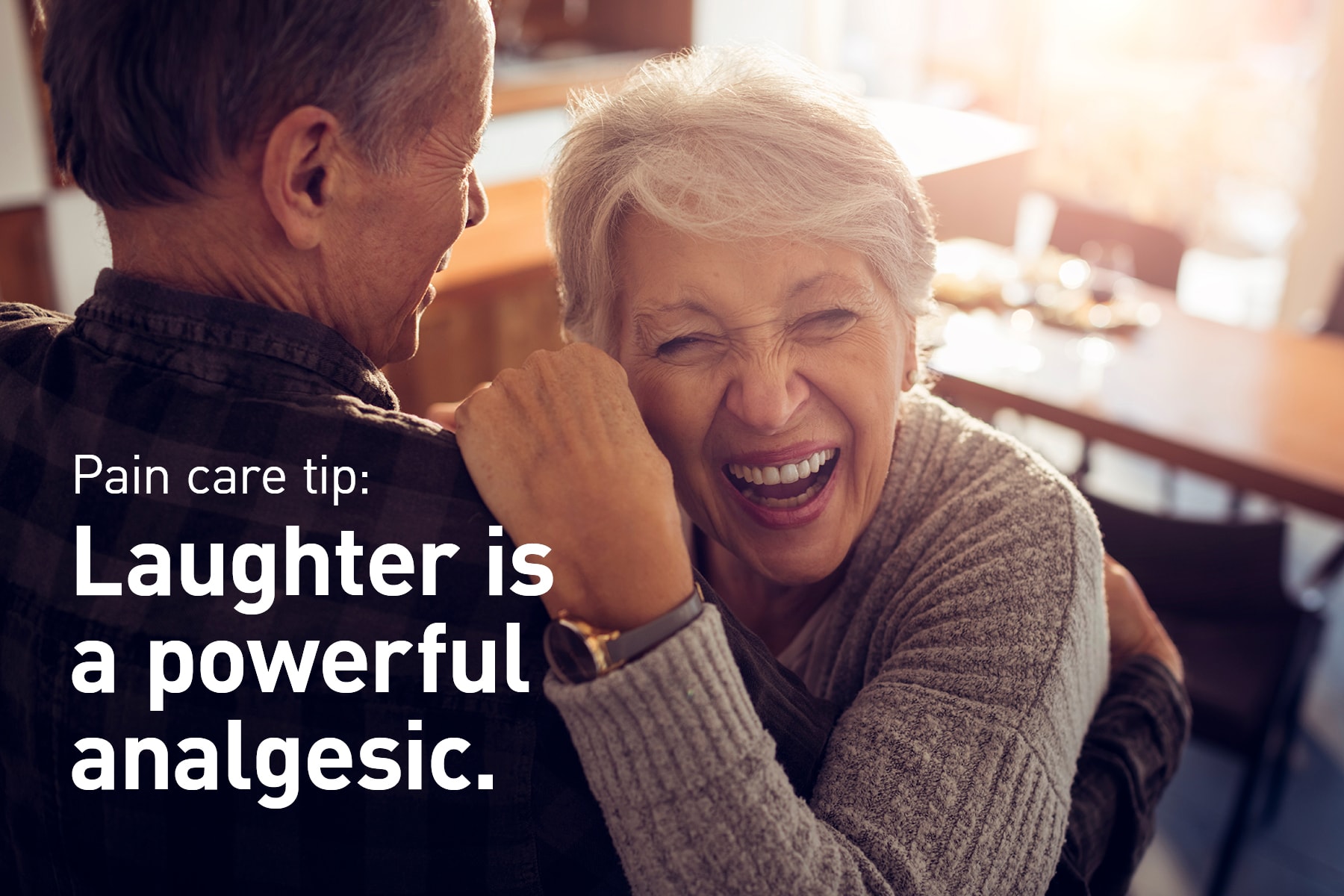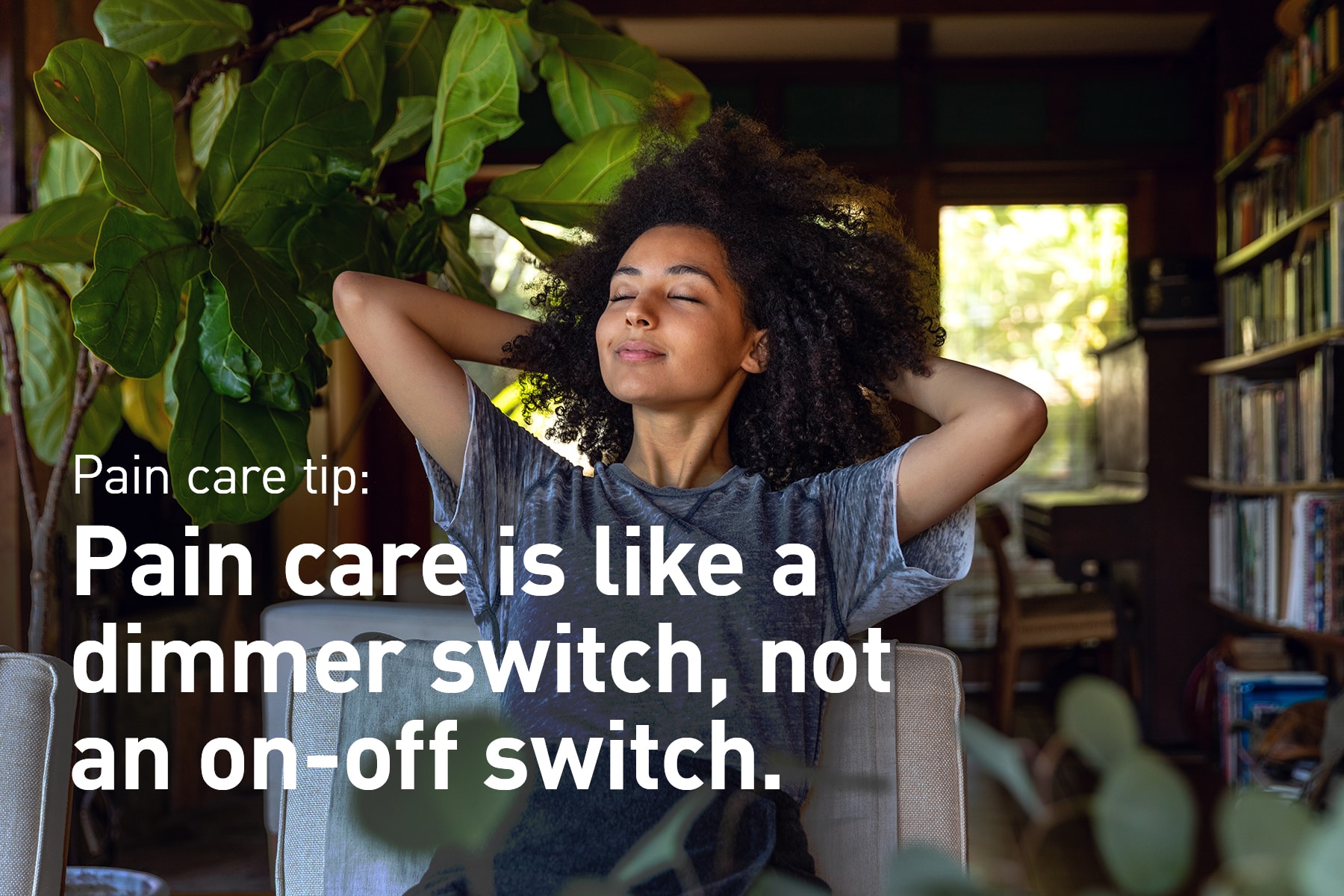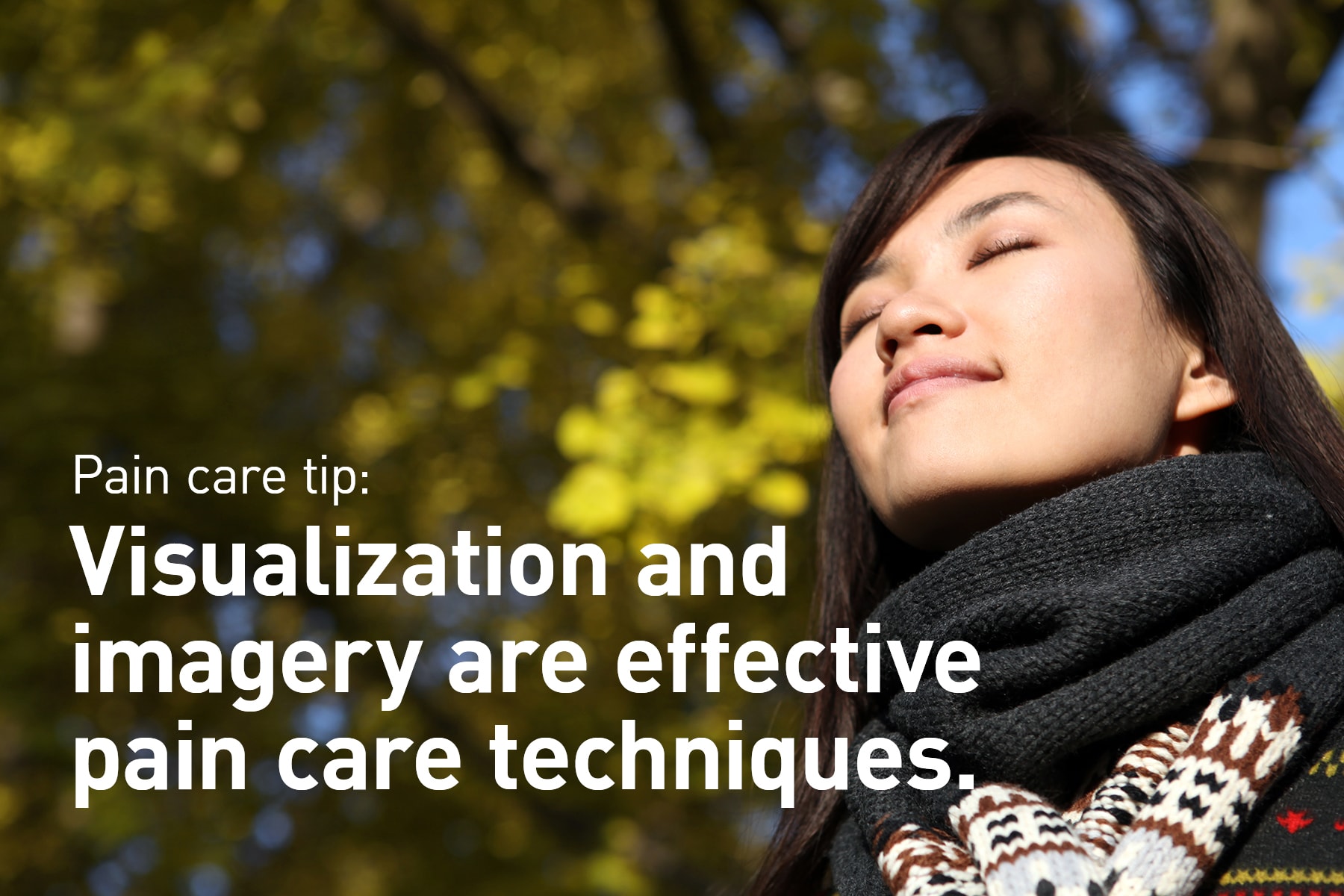Pain Care Tips
There are many ways to open the medicine cabinet inside you. Gentle movement, no matter how small, is a pain care treatment. Maybe your systems are so sensitive that you need to start by imagining movement. Maybe you need to spend time finding more peace first. Maybe you need to find someone to guide you. And maybe the First 5 Steps of Pain Care for Life will be an effective guide for you. Movement is not the only answer, but it is one of the most important ones.

Any treatment or pain management strategy that decreases pain, but does not improve ease of movement, is less likely to be effective over time.
Learning more about pain and how pain interacts with the body's systems can help you manage your pain and recover ease of movement. No two paths to recovery are identical: some of us only need to know that you can have control over pain and that there is hope before we feel ready to start experimenting with techniques that will help us get back to life. Others need to become experts by understanding everything we can about pain before we can move forward. Step 1 of the First 5 steps of Pain Care for Life includes videos that share information that is just starting to make its way into professional health education. Steps 2-4 provide guidance to help you put different techniques into practice. Give it a shot!


Laughter truly is medicine. Though this won't fix everything, finding ways to smile and laugh more will change your body’s chemistry in many positive ways. This is not just distraction: it is an effective way to find some respite from your pain. It's okay to have fun when you're in pain. Smiling and laughing may be difficult, but it's both okay and possible. Keep trying! Find ways to be around the people you know who are able to smile more easily, those who make others laugh. Pain pushes us so far away from joy, yet finding a glimmer of a smile and then more and more joy is one way to influence your pain and work towards living well again. To get started, try this and this.
You can change your brain. This is not wishful thinking, it is science, and we know people can do it even in the most difficult times, when pain is at its most severe. Research says that different techniques change your brain in different ways, so you need to try them all to find the best combination for you.
- Moving with ease
- Breathing longer, smoother and softer
- Self-compassion, acceptance and love
- Mindfulness meditation
- Yoga, Tai Chi, Qi Gong
- Imagined movement and visualization
Many of the techniques are covered in the self-care resources.
Many pain control products use language that promotes the idea of instant, immediate pain relief. This is what we want. Yet, lasting improvements are rarely achieved this way. Techniques that improve ease of movement and lower the intensity of the pain are the best long-term solutions. The most important benefit of any technique or treatment is that it allows you to move with more ease, enabling you to make more changes that will last. In time, those small changes will add up. To learn more about moving with more ease, try out the first 5 steps of Pain Care for Life for free.

One of the benefits of mindful practices and awareness techniques is that they allow us to witness how pain and all sensations from our body change from moment to moment. This can make us feel hopeful, as it allows us to believe we can find a way to influence these changes.
Pushing through the pain is often not the ideal solution to your problem. While people around you may encourage you to "tough it out," struggling too hard can cause your fight-flight automatic systems to stay on high alert. Pushing through the pain could also teach your sophisticated pain and protection systems that you will not listen unless they are being very loud. When you can, try this instead: stop sooner. When your body tells you that you are going too far and that you're not safe anymore, stop. Do your best to limit how often you experience the cycle known as "Endure the pain - Experience a flare - Crash until the body calms down." If you are not certain how to do this, you can try for free the Movement Guidelines/Recovery of Ease of Movement process in step 4 of Pain Care for Life.
For example, the level of pain you experience as a result of hitting your thumb with a hammer can be different depending on who is with you and whether you are happy or angry. Pain intensity depends on what is happening in your body and how your systems are responding to it.
Your brain can’t tell the difference between a thought and reality. This is why athletes visualize success: being able to visualize themselves performing difficult movements improves their chances of being successful. Use your imagination to visualize yourself moving with less pain or more ease. Start with movements that you think are possible, then go a little further. Imagining seeing yourself performing a movement with more ease, then try imagining the feelings and the sensations of your body and breath. Some of the science behind this is discussed in videos available for free in step 1 of the first 5 steps of Pain Care for Life.

